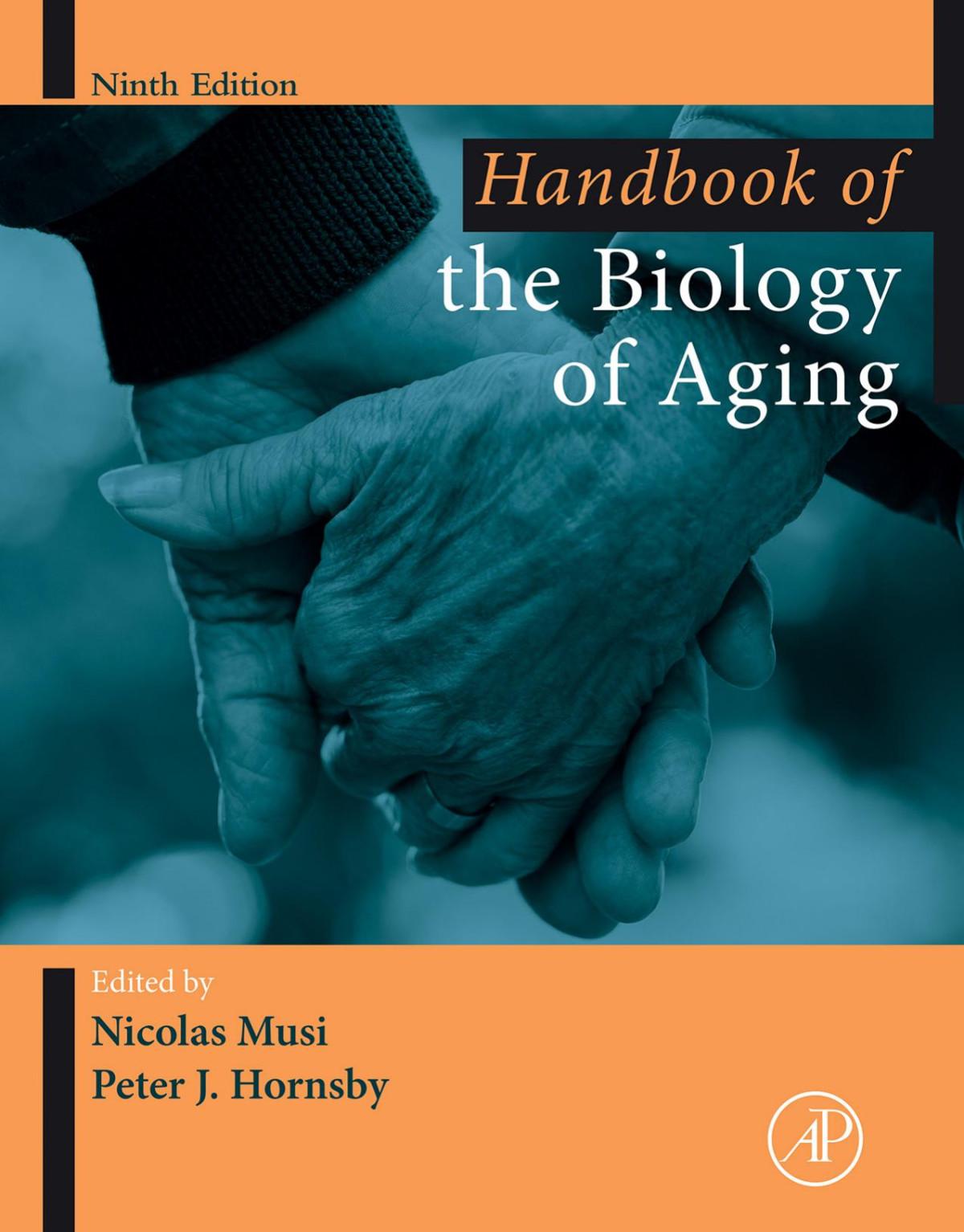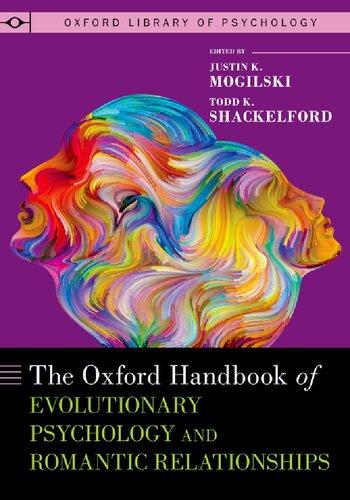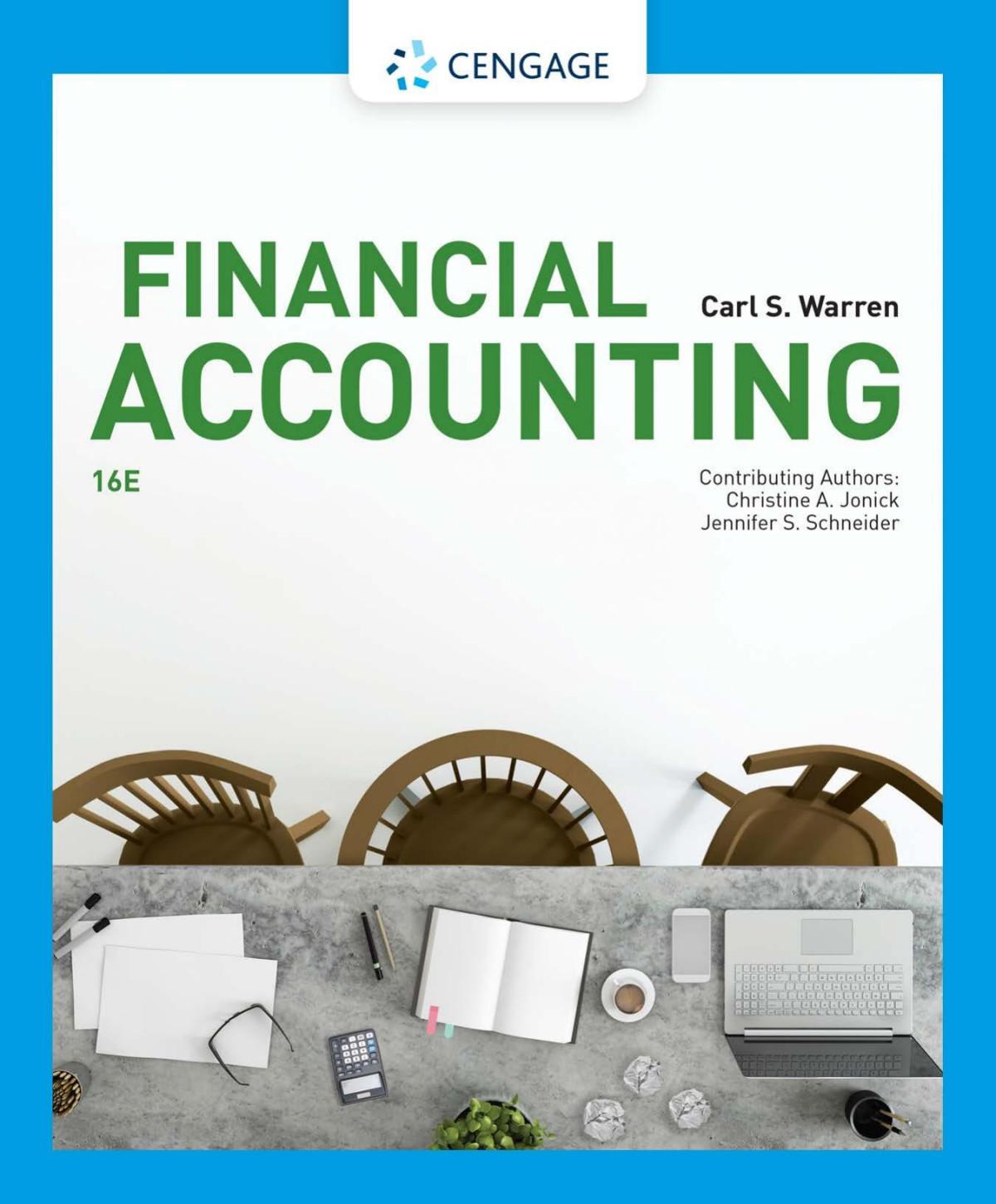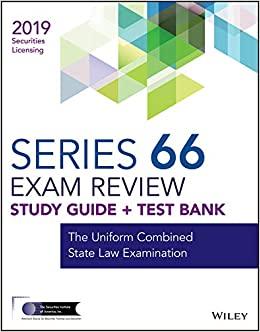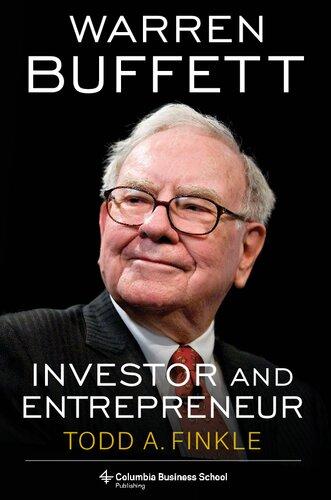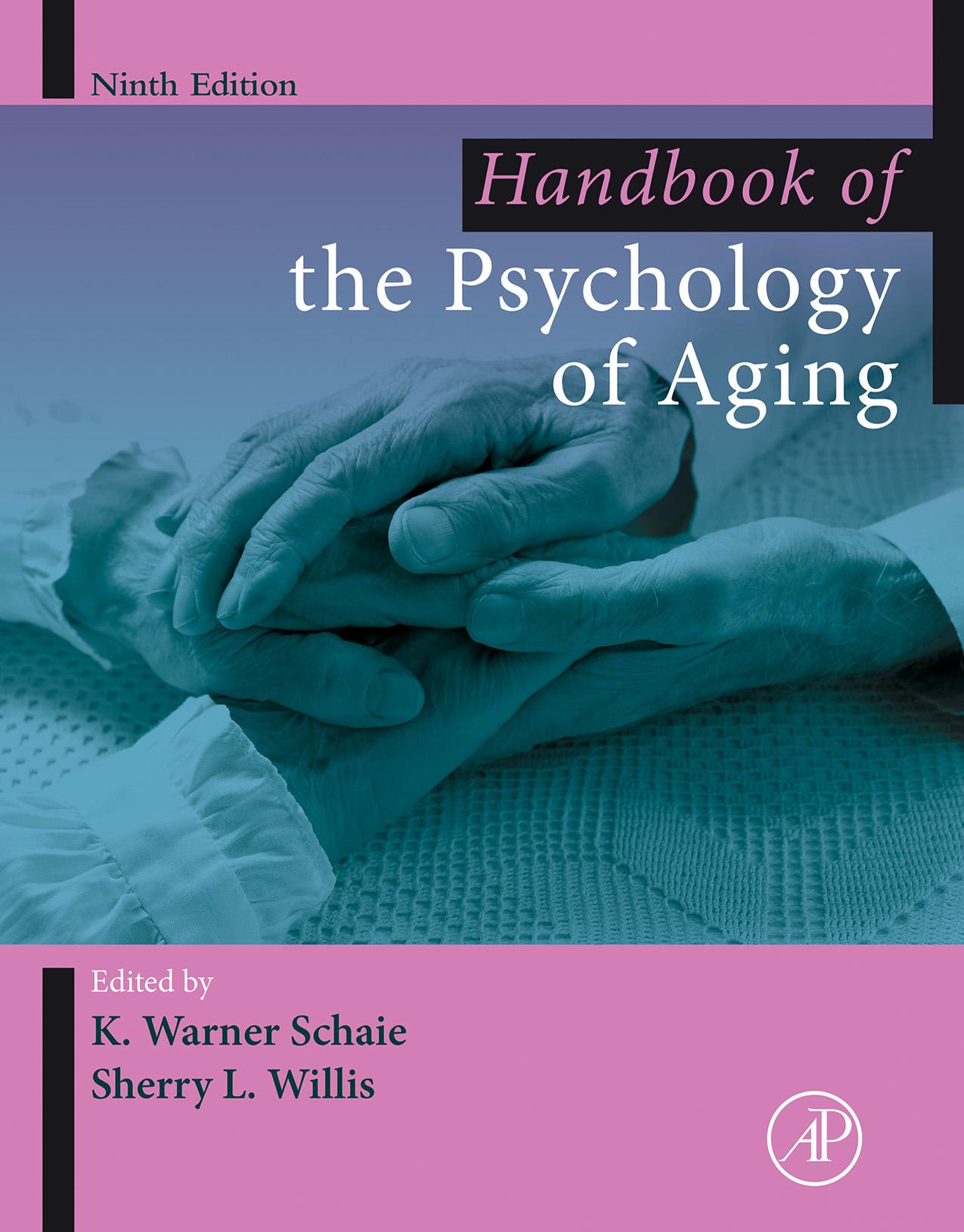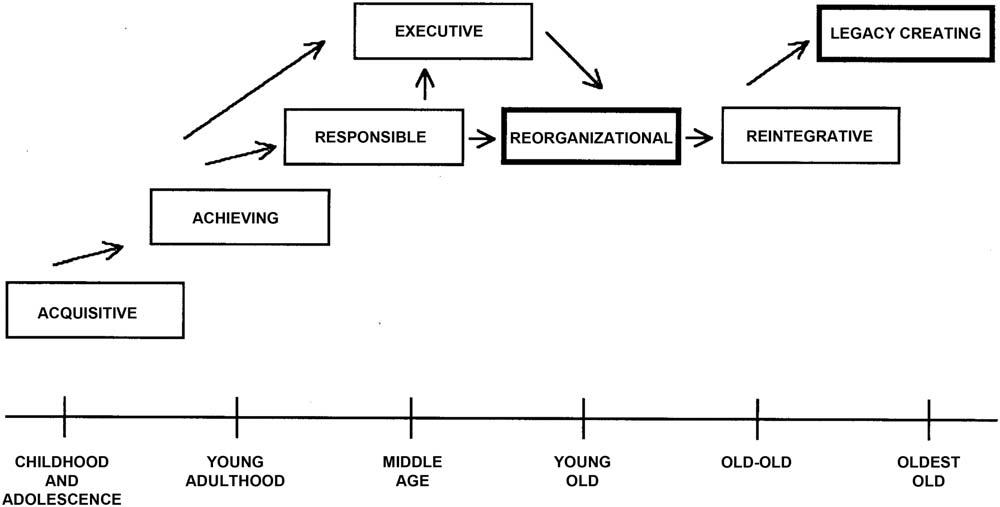https://ebookmass.com/product/handbook-of-the-psychology-of-
Instant digital products (PDF, ePub, MOBI) ready for you
Download now and discover formats that fit your needs...
Handbook of the Biology of Aging Nicolas Musi
https://ebookmass.com/product/handbook-of-the-biology-of-agingnicolas-musi/
ebookmass.com
Handbook of Aging and the Social Sciences, Eighth Edition Carr
https://ebookmass.com/product/handbook-of-aging-and-the-socialsciences-eighth-edition-carr/
ebookmass.com
The Oxford Handbook of Evolutionary Psychology and Romantic Relationships Justin K. Mogilski (Editor)
https://ebookmass.com/product/the-oxford-handbook-of-evolutionarypsychology-and-romantic-relationships-justin-k-mogilski-editor/ ebookmass.com
The Prosody of Dubbed Speech: Beyond the Character's Words 1st ed. 2020 Edition Sofía Sánchez-Mompeán
https://ebookmass.com/product/the-prosody-of-dubbed-speech-beyond-thecharacters-words-1st-ed-2020-edition-sofia-sanchez-mompean/ ebookmass.com
Financial Accounting, 16th Edition Carl Warren & Christine
Jonick & Jennifer Schneider
https://ebookmass.com/product/financial-accounting-16th-edition-carlwarren-christine-jonick-jennifer-schneider/
ebookmass.com
Trevor Winchester Swan, Volume II: Contributions to Economic Theory and Policy Peter L. Swan
https://ebookmass.com/product/trevor-winchester-swan-volume-iicontributions-to-economic-theory-and-policy-peter-l-swan/
ebookmass.com
Laboratory Methods in Microfluidics 1st Edition Edition Basant Giri (Auth.)
https://ebookmass.com/product/laboratory-methods-in-microfluidics-1stedition-edition-basant-giri-auth/
ebookmass.com
Bride for the Bikers: An MC Reverse Harem Romance (Screaming Eagles MC Book 7) Stephanie Brother
https://ebookmass.com/product/bride-for-the-bikers-an-mc-reverseharem-romance-screaming-eagles-mc-book-7-stephanie-brother/
ebookmass.com
Wiley Series 66 Securities Licensing Exam Review 2019 + Test Bank: The Uniform Combined State Law Examination (Wiley Securities Licensing)
https://ebookmass.com/product/wiley-series-66-securities-licensingexam-review-2019-test-bank-the-uniform-combined-state-law-examinationwiley-securities-licensing/
ebookmass.com
Warren Buffett: Investor and Entrepreneur Todd A. Finkle
https://ebookmass.com/product/warren-buffett-investor-andentrepreneur-todd-a-finkle/
ebookmass.com
HANDBOOKOFTHEPSYCHOLOGYOFAGING
NINTHEDITION
THEHANDBOOKSOF AGING
ConsistingofThreeVolumes
CriticalComprehensiveReviewsofResearchKnowledge, Theories,Concepts,andIssues
Editors-in-Chief
LauraL.Carstensenand ThomasA.Rando
HandbookoftheBiologyofAging,9thEdition
EditedbyNicolasMusiandPeterJ.Hornsby
HandbookofthePsychologyofAging,9thEdition
EditedbyK.WarnerSchaieandSherryL.Willis
HandbookofAgingandtheSocialSciences,9thEdition
EditedbyKennethF.FerraroandDeborahCarr
HANDBOOKOFTHE PSYCHOLOGYOF AGING
NINTHEDITION
Editedby K.WARNER SCHAIE
DepartmentofPsychiatry&BehavioralSciences,UniversityofWashington,Seattle, WA,UnitedStates
SHERRY L.WILLIS
DepartmentofPsychiatry&BehavioralSciences,UniversityofWashington,Seattle, WA,UnitedStates
AssociateEditors
BOB G.KNIGHT
BECCA R.LEVY
SUSAN M.RESNICK
AcademicPressisanimprintofElsevier 125LondonWall,LondonEC2Y5AS,UnitedKingdom 525BStreet,Suite1650,SanDiego,CA92101,UnitedStates 50HampshireStreet,5thFloor,Cambridge,MA02139,UnitedStates TheBoulevard,LangfordLane,Kidlington,OxfordOX51GB,UnitedKingdom
Copyright©2021ElsevierInc.Allrightsreserved.
Nopartofthispublicationmaybereproducedortransmittedinanyformorbyanymeans,electronicormechanical,includingphotocopying,recording, oranyinformationstorageandretrievalsystem,withoutpermissioninwritingfromthepublisher.Detailsonhowtoseekpermission,furtherinformation aboutthePublisher’spermissionspoliciesandourarrangementswithorganizationssuchastheCopyrightClearanceCenterandtheCopyrightLicensing Agency,canbefoundatourwebsite: www.elsevier.com/permissions
ThisbookandtheindividualcontributionscontainedinitareprotectedundercopyrightbythePublisher(otherthanasmaybenotedherein).
Notices
Knowledgeandbestpracticeinthisfieldareconstantlychanging.Asnewresearchandexperiencebroadenourunderstanding,changesinresearchmethods,professionalpractices,ormedicaltreatmentmaybecomenecessary.
Practitionersandresearchersmustalwaysrelyontheirownexperienceandknowledgeinevaluatingandusinganyinformation,methods,compounds,or experimentsdescribedherein.Inusingsuchinformationormethodstheyshouldbemindfuloftheirownsafetyandthesafetyofothers,includingparties forwhomtheyhaveaprofessionalresponsibility.
Tothefullestextentofthelaw,neitherthePublishernortheauthors,contributors,oreditors,assumeanyliabilityforanyinjuryand/ordamageto persons orpropertyasamatterofproductsliability,negligenceorotherwise,orfromanyuseoroperationofanymethods,products,instructions,orideascontainedinthematerialherein.
BritishLibraryCataloguing-in-PublicationData
AcataloguerecordforthisbookisavailablefromtheBritishLibrary LibraryofCongressCataloging-in-PublicationData
AcatalogrecordforthisbookisavailablefromtheLibraryofCongress
ISBN:978-0-12-816094-7
ForInformationonallAcademicPresspublications visitourwebsiteat https://www.elsevier.com/books-and-journals
Publisher: NikkiLevy
EditorialProjectManager: BarbaraMakinster
ProductionProjectManager: SwapnaSrinivasan
CoverDesigner: MatthewLimbert
TypesetbyMPSLimited,Chennai,India
Listofcontributorsxi
Abouttheeditorsxiii
Forewordxv
Prefacexvii
I
Concepts,theories,methods
1.Historyofadultcognitiveagingresearch
K.WARNERSCHAIE
Introduction3
Adultstagesofintellectualdevelopment4
Astagemodelofadultcognitivedevelopment4
Assessmentofintellectualfunctions6
Atestofintelligence6
Thenatureofintelligence7
Intelligenceasmultipleabilities7
Practicaloreverydayintelligence8
Intelligenceandage8
Crystallizedandfluidintelligence9
Earlycross-sectionalstudies9
Longitudinalstudies10
Cohortdifferences10
Magnitudeofchange12
Frequencyofdecline13
Personalityandlifestyles13
Summary14
References15
Furtherreading17
2.Measurementandmodelsformulti-timescale psychologicalprocessesinagingresearch19
STEVENM.BOKERANDJOHNR.NESSELROADE
Introduction19
Matchingtheresearchdesigntothequestion20
Modelingreview21
Cross-sectionalmodels21
Autoregressiveandcrosslagmodels22
Latentgrowthcurvesandmultilevelmodels22
Thechangingdatalandscape24
Multi-timescaleprocessesandresearchdesigns24
Measuringandmodelingmultiscaleprocessesfrom intensivetimeseries25
Dynamicalsystemsandattractors25
Dynamicalsystemsmodelsinaging26 Challenges28
Planningforthelongterm28
Privacy,linking,anddatasharing28
Incompletenessandattrition29
Reliabilityversussensitivity30
Measurementinvarianceovertime30
Emergingopportunities30
Intrinsiccapacityandfunctionalability31 Conclusion31 References31
Bio-psychosocialfactorsinaging
3.Functionalconnectivityinaging37
FRANZISKUSLIEM,LINDAGEERLIGS,JESSICAS.DAMOISEAUXAND DANIELS.MARGULIES
Generalintroductionandoutlineofchapter37 Functionalconnectivity38
Thedefaultmodenetwork38
Functionalconnectivityinaging38 Within-networkconnectivity38
Between-networkconnectivity40 Whole-brainconnectivity41 Dynamics42
Cognitionandfunctionalconnectivity43
Functionalconnectivityinneurodegenerativedisorders44
Functionalconnectivityasabiomarker45
Functionalconnectivityasageneralbiomarker forbrainhealth45
Connectivityasanearlymarkerforneurodegenerative disorders45
Methodologicalconsiderationsrelevanttoagingresearch46 Summaryandfuturedirections47 Acknowledgments47 References47
7.Sleep,neurocognition,andaging,including seculartrendsinolderadultsleep99
functionsdecline?
Behavioralprocesses
9.Smartphones,robots,andsocialmedia: agingwithcommunicationtechnologies139
Smartphones140
Socialmedia142
Videogaming143
Virtualreality145
Smarthometechnology146
Robots147
Concludingremarks149 References150
10.Self-perceptionsandawarenessofaging: past,present,andfuture155
MANFREDDIEHL,ALLYSONF.BROTHERSANDHANS-WERNERWAHL
Introduction155
Aconceptualframeworkforsubjectiveagingresearch156
Subjectiveage:strengthsandlimitations157
Self-perceptionsandawarenessofaging:thepast158
Self-perceptionsandawarenessofaging:thepresent158
Self-perceptionsofaging:conceptualandmeasurement considerations159
Awarenessofage-relatedchange:conceptualand measurementconsiderations159
Empiricalfindingsontheroleofself-perceptionsand awarenessofaging161
Seculartrends/cohortdifferencesinself-perceptionsand awarenessofaging167
Self-perceptionsandawarenessofaging:thefuture169
Focusonpathwaysandmechanisms169
Elaboratingdevelopmentalantecedents,correlates, andtrajectories170
Examiningthemodifiabilityofself-perceptionsofaging171
Changingthesocietalcontextofself-perceptionsofaging172
Conclusion173
Acknowledgment174 References174
11.Genderdiversityinlaterlife181
JENNIFERL.O’BRIENANDSUSANKRAUSSWHITBOURNE
Introduction181
Genderidentity181
Terms182
Redefiningthegenderbinary182
Genderidentitythroughoutthelifespan183
Researchfindings183
Genderaffirmation184
Agingandgenderidentity185
Uniquechallengesfacedbygenderdiverseelders186
Improvingoutcomesforgenderdiverseelders187
Focusonresilience188
Policiesandstepstopromoteinclusivityinhealthcarepractice188
12.Financialdecision-makingandcapacityin olderadults193
DANIELC.MARSON,DEBORAHL.KERRANDDONALDG.MCLAREN
Introduction:whatisfinancialcapacity?Legal,clinicaland ethicalperspectives194
Thefinancialcapacityproblem:cognitiveagingand disordersofaging195
Clinicalwarningsignsofdiminishedfinancialcapacity196
Challengesinmodelingfinancialcapacity197
Clinicalmodeloffinancialcapacity198
Approachestoassessingfinancialcapacity198
Assessingpremorbidfinancialcapacity200
Selfandinformant-basedassessment200
Performance-basedassessment200
Clinicalinterviewassessmentoffinancialcapacity201
Empiricalstudiesoffinancialcapacity202
Financialcapacityinpatientswithmildandmoderate Alzheimer’sdisease202
Financialcapacityinpatientswithmildcognitiveimpairment203
Neuropsychologicalpredictorsoffinancialcapacity204
Neuroimagingstudiesoffinancialcapacity205
Neuroimagingapproachestostudyingfinancialcapacity205
Neuroimagingstudiesoffinancialcapacityinamildcognitive impairmentandAlzheimer’sdisease205
Neuroimagingstudiesoffinancialdecisionmakingin cognitivelynormalolderadults206
Summary206
Noncognitivecontributionstofinancialcapacityinaging206
Psychologicalandpsychiatriccontributionstofinancial capacity207
Relationshipofphysicaldependence/medicalfrailtyto financialcapacityinaging208
Noncognitivecontributionstofinancialcapacityinaging208
Culturalandsocialcontributionstofinancialcapacity inaging208
Resilienceandfinancialcapacityinaging209
Futureresearchdirections210
Detectingveryearlyfinancialdeclinesincognitivelynormal elderly210
Studyoffinancialcapacityinotherolderadultclinical populations210
Studyofnoncognitivecontributionstofinancialcapacityin aging210
Evolutionoffinancialcapacityinatechnologicalsociety210 References211
13.Theolderworker:genderandagediscrimination intheworkplace215
STEPHANEP.FRANCIOLIANDMICHAELS.NORTH
Thewhat,where,andwhenofdiscriminationagainstolder workers216 Hiringdiscrimination217 On-the-jobdiscrimination218
Discriminationatjobseparation220
Whydoesdiscriminationagainstolderworkersoccur?220
Fromstereotypesof,todiscriminationtowardolderworkers221
Thepowerfulprescriptiveeffectsofagenorms223
Attheintersectionofageandgender:thecaseoffemale olderworkers225
Doolderfemaleworkershaveitworse?225
Genderedageismand“Lookism”226
Conclusionandopportunitiesforfutureresearch227 References228
14.Rememberingthepersonalpastacross adulthood237
NICOLEALEA,SUSANBLUCKANDSHUBAMSHARMA
Cognitivepsychologytradition:ecological,everydaymemory238
Thepersonalpast:empiricalresearchincognitivepsychology239
Gerontologicaltradition:reminiscenceandlifereview240
Thepersonalpast:empiricalresearchingerontology240
Personalitypsychologytradition:autobiographical reasoningandthelifestory241
Thepersonalpast:empiricalresearchinpersonality psychology241 Bridgingtraditions242
Functionsofautobiographicalmemory243 Conclusion243 References244
IV Complexprocesses
15.Psychologicalassessmentofneurocognitive disorders251
BRIANP.YOCHIMANDBENJAMINT.MAST
Introduction251
Neurocognitivedisorders252
Assessmentofneurocognitivedisorders252
Culturalconsiderationsintheassessmentoflatelife neurocognitivedisorders253
Establishingetiologies254 Capacityassessment255
Emergenceofpositivepsychologyandperson-centeredcare256
Nontraditional,unobtrusivemeasuresofcognition257 Conclusion258 References258 Furtherreading262
16.Familycareexchangesacrossthelifespan263
CYNTHIAA.BERG,CAITLINS.KELLYANDREBECCAL.UTZ
Thelife-spanmodeloffamilycareexchanges264 Commonriskandprotectivefactorsforfamilycareexchanges266
Culturalcontext267
Familyfactors268
Individualfactors269
Futuredirectionsandconclusions270
Implicationsofalife-spanmodeloffamilycareexchanges270 Clinicalandpolicyimplications270 References271
17.Stress,coping,andaging275
CAROLYNM.ALDWIN,LORIENAYANCURAANDHYUNYUPLEE
Stress276
Foundationalconceptsinthestudyofstress276 Trauma276 Lifeevents277 Hassles277 Chronicrolestrain277 Doesstresschangewithage?278 Coping278
Foundationalconceptsinthestudyofcoping278 Changesincopingwithage279 Theoreticalmodelsofstress,coping,andaging280 Age-relatedchangesinmotivation280 Increaseincopingefficiency281 Summary281 References282 Furtherreading286
18.Resilienceinmidlifeandaging287
KAARINJ.ANSTEYANDROGERA.DIXON
Introduction287 Resilienceandthelifecourse288 Conceptsanddefinitions:distinguishingresiliencefrom relatedconcepts288 Measurementofresilience291 Scaleapproachestomeasuringresilience292 Trajectoryapproachestodefininganddetectingresilience292 Epidemiologicalcontributions293 Resilienceinmidlife294 Domainspecificresilienceinaging294 Comparisonofcognitiveresiliencetorelatedconcepts295 Physical,psychological,andgeneralresilience296 Conclusionsandfuturedirections296 Acknowledgments297 References297
19.Successfulaging:anobscurebut obviousconstruct301
RACHELPRUCHNO
Semanticsregardingsuccessfulaging302 Thebedrocksofsuccessfulaging303 Earlyscience303 Theperspectivescollide304
Successfulaging:amultidimensionalconceptorafuzzyone?305
Successfulaging:anewparadigm307
Successfulaging:apublichealthimperative309
Interventionspromotingsuccessfulaging310 Futuredirections310 Conclusions312 References312
20.Cognitivefunctioninganddementia prevalenceinbabyboomersandadjacentcohorts: Longitudinalandcohorteffects319
SHERRYL.WILLISANDK.WARNERSCHAIE
IncreaseinUSagingpopulation(2.22.2021)320
Changesindiversity:RaceandethnicityofolderUS population320
Significantcontributionofboomerstoincreasesin USagingpopulation320 USHispanicbabyboomers321
Boomergenerationsworldwide322
Cohortandlongitudinaleffects:Comparisonofcognition incohortsinmidlifewithspecialfocusonthe babyboomers322
Studyofcognitioninboomers322
Memory:Cognitivechangetrajectoryinmidlife325 Cohortdifferencesincognitioninoldage:Differential findings326
CohortandlongitudinalfindingsfromSeattleLongitudinal Study:Age-relatedchangefrom50to80yearsin 2cohortsinoldage(1886 1913;1914 48)326
Earlierbornversuslaterborncohorts327 Cohortdifferencesinrateofcognitiveaging327 Cohortdifferencesinterminalcognitivedecline: Twocohortsinoldage(1886 1913;1914 48)327
Assessingcompressionofmorbidity:Timetodeathmetric329 Cohortdifferences329
Recentchangesinprevalenceandincidenceofdementia330 Agespecificversuscohortanalysesofdementiaprevalence330 Possibleexplanations331
Dementiaprevalenceandincidenceinnon-Hispanic Blackelderly331 Discussion332
Cohortdifferencesinvariouscognitiveabilities: Meanlevelandvariability332
Cohortdifferencesandcognitivechangeinfrom50to 80yearsin2cohortsinoldage(1886 1913;1914 48)333 Cohortdifferencesinterminaldecline333
Changesinprevalenceofdementiaandpossiblecohort differences334 Futuredirections334 References334 Furtherreading337 Authorindex339 Subjectindex359
Thispageintentionallyleftblank
Listofcontributors
CarolynM.Aldwin PrograminHumanDevelopmentand FamilySciences,OregonStateUniversity,Corvallis,OR, UnitedStates
NicoleAlea DepartmentofPsychologicalandBrain Sciences,UniversityofCaliforniaSantaBarbara,Santa Barbara,CA,UnitedStates
KaarinJ.Anstey UNSWAgeingFuturesInstitute, UniversityofNewSouthWales,Sydney,NSW,Australia
CynthiaA.Berg DepartmentofPsychology,Consortium forFamiliesandHealthResearch,UniversityofUtah,Salt LakeCity,UT,UnitedStates
SusanBluck DepartmentofPsychology,Universityof Florida,Gainesville,FL,UnitedStates
StevenM.Boker DepartmentofPsychology,The UniversityofVirginia,Charlottesville,VA,UnitedStates
JenniferL.O’Brien MassachusettsInstituteofTechnology (MIT),MedicalDepartment,Cambridge,MA,UnitedStates
AllysonF.Brothers DepartmentofHumanDevelopment andFamilyStudies,ColoradoStateUniversity,Fort Collins,CO,UnitedStates
ChengChen MediaEffectsResearchLaboratory,DonaldP. BellisarioCollegeofCommunications,PennsylvaniaState University,StateCollege,PA,UnitedStates
JessicaS.Damoiseaux DepartmentofPsychologyand InstituteofGerontology,WayneStateUniversity,Detroit, MI,UnitedStates
ManfredDiehl DepartmentofHumanDevelopmentand FamilyStudies,ColoradoStateUniversity,FortCollins, CO,UnitedStates
RogerA.Dixon DepartmentofPsychology,Universityof Alberta,Edmonton,AB,Canada
AmandaF.Elliott DepartmentofBiobehavioralNursing Science,UniversityofFlorida,CollegeofNursing, Gainesville,FL,UnitedStates
SaraB.Festini CenterforVitalLongevity,Universityof TexasatDallas,Dallas,TX,UnitedStates
StephaneP.Francioli NewYorkUniversity,SternSchool ofBusiness,NewYork,NY,UnitedStates
LindaGeerligs DondersInstituteforBrain,Cognitionand Behaviour,RadboudUniversity,Nijmegen,The Netherlands
JeffGreenberg DepartmentofPsychology,Universityof Arizona,Tucson,AZ,UnitedStates
AnnL.Horgas DepartmentofBiobehavioralNursing Science,UniversityofFlorida,CollegeofNursing, Gainesville,FL,UnitedStates
TiffanyK.Jantz DepartmentofPsychology,Universityof Michigan,AnnArbor,MI,UnitedStates
CaitlinS.Kelly DepartmentofPsychology,Consortiumfor FamiliesandHealthResearch,UniversityofUtah,Salt LakeCity,UT,UnitedStates
DeborahL.Kerr DepartmentofNeurology,Universityof AlabamaatBirmingham,Birmingham,AL,UnitedStates; DepartmentofPsychiatryandBehavioralNeurobiology, UniversityofAlabamaatBirmingham,Birmingham,AL, UnitedStates
MichaelL.Krieger MediaEffectsResearchLaboratory, DonaldP.BellisarioCollegeofCommunications, PennsylvaniaStateUniversity,StateCollege,PA,United States
HyunyupLee DepartmentofPsychologyand Management,KoreaMilitaryAcademy,Seoul,Republicof Korea
FranziskusLiem UniversityResearchPriorityProgram “DynamicsofHealthyAging”,UniversityofZurich, Zurich,Switzerland
ZiyongLin DepartmentofPsychology,Universityof Michigan,AnnArbor,MI,UnitedStates
CindyLustig DepartmentofPsychology,Universityof Michigan,AnnArbor,MI,UnitedStates
DanielS.Margulies IntegrativeNeuroscienceand CognitionCenter(UMR8002),CentreNationaldela RechercheScientifique(CNRS)andUniversite deParis, Paris,France
DanielC.Marson DepartmentofNeurology,Universityof Alabama atBirmingham,Birmingham,AL,UnitedStates; Alzheimer’sDiseaseCenter,UniversityofAlabamaat Birmingham,Birmingham,AL,UnitedStates
BenjaminT.Mast DepartmentofPsychological&Brain Sciences,UniversityofLouisville,Louisville,KY,United States
MollyMaxfield EdsonCollegeofNursingandHealth Innovation,CenterforInnovationinHealthyand ResilientAging,ArizonaStateUniversity,Phoenix,AZ, UnitedStates
CatherineA.McCall DepartmentofPulmonary,Critical Care,andSleepMedicine,VAPugetSoundHealthCare System,Seattle,WA,UnitedStates;Departmentof PsychiatryandBehavioralSciences,Universityof WashingtonSleepMedicineCenter,Seattle,WA,United States
DonaldG.McLaren DepartmentofNeurology, MassachusettsGeneralHospital,Boston,MA,United States;HarvardMedicalSchool,Boston,MA,United States
JohnR.Nesselroade DepartmentofPsychology,The UniversityofVirginia,Charlottesville,VA,UnitedStates
MichaelS.North NewYorkUniversity,SternSchoolof Business,NewYork,NY,UnitedStates
RachelPruchno NewJerseyInstituteforSuccessfulAging, RowanUniversitySchoolofOsteopathicMedicine, Stratford,NJ,UnitedStates
PatriciaA.Reuter-Lorenz DepartmentofPsychology, UniversityofMichigan,AnnArbor,MI,UnitedStates
K.WarnerSchaie DepartmentofPsychiatry&Behavioral Sciences,UniversityofWashington,Seattle,Washington, DC,UnitedStates
ShubamSharma DepartmentofPsychology,Universityof Florida,Gainesville,FL,UnitedStates
Eva-MariaStelzer DepartmentofPsychology,Universityof Arizona,Tucson,AZ,UnitedStates
S.ShyamSundar MediaEffectsResearchLaboratory,Donald P.BellisarioCollegeofCommunications,PennsylvaniaState University,StateCollege,PA,UnitedStates
RebeccaL.Utz DepartmentofSociology,Consortiumfor FamiliesandHealthResearch,UniversityofUtah,Salt LakeCity,UT,UnitedStates
NathanielF.Watson DepartmentofNeurology,University ofWashingtonSleepMedicineCenter,Seattle,WA, UnitedStates
Hans-WernerWahl NetworkAgingResearch,Heidelberg University,Heidelberg,Germany
SusanKraussWhitbourne UniversityofMassachusetts Boston,Boston,MA,UnitedStates
SherryL.Willis DepartmentofPsychiatry&Behavioral Sciences,UniversityofWashington,Seattle,Washington, DC,UnitedStates
LorienaYancura DepartmentofFamilyandConsumer Sciences,UniversityofHawai’i,Manoa,Honolulu,HI, UnitedStates
BrianP.Yochim VASaintLouisHealthCareSystem, St.Louis,MO,UnitedStates
Abouttheeditors
K.WarnerSchaie holdsanappointmentasaffiliate ProfessorofPsychiatryandBehavioralSciencesatthe UniversityofWashington.HeisalsotheEvanPugh ProfessorEmeritusofHumanDevelopmentand PsychologyatthePennsylvaniaStateUniversity.He receivedhisPhDinclinicalanddevelopmentalpsychologyfromtheUniversityofWashington,ahonoraryDPhil.fromtheFriedrich-SchillerUniversityof Jena,Germany,andahonoraryScDdegreefromWest VirginiaUniversity.HereceivedtheKleemeierAward forDistinguishedResearchContributionsandthe DistinguishedCareerContributiontoGerontology AwardfromtheGerontologicalSocietyofAmerica,the MENSAlifetimecareeraward,andtheDistinguished ScientificContributionsawardfromtheAmerican PsychologicalAssociation.Heisapastpresidentofthe APADivisionofAdultDevelopmentandAgingand currentlyrepresentsthatDivisionontheAPACouncil ofRepresentatives.Heisauthororeditorofmorethan 60booksincludingthetextbook AdultDevelopmentand Aging (5thedition,withS.L.Willis)andofallprevious editionsofthe HandbookofthePsychologyofAging (withJ.E.BirrenorS.L.Willis).Hehasdirectedthe SeattleLongitudinalStudyofcognitiveagingsince 1956andistheauthorofmorethan300journalarticles andchaptersonthepsychologyofaging.Hiscurrent researchinterestisinthelifecourseofadultintelligence,itsantecedentsandmodifiability,theimpactof cognitivebehaviorinmidlifeupontheintegrityof brainstructuresinoldage,theearlydetectionofrisk fordementia,aswellasmethodologicalissuesinthe developmentalsciences.
SherryL.Willis isaresearchprofessorinthe DepartmentofPsychiatryandBehavioralSciencesat theUniversityofWashington.Shepreviouslyheldan appointmentasProfessorofHumanDevelopmentat thePennsylvaniaStateUniversity.Herresearchhas focusedonage-relatedcognitivechangesinlateradulthood.Inparticularsheisknownforherworkon behavioralinterventionstoremediateandenhance cognitiveperformanceincommunity-dwellingnormal
elderly.Shewasaprincipalinvestigatoronthe ACTIVEstudy,arandomizedcontrolledtrialto examinetheeffectsofcognitiveinterventionsinthe maintenanceofeverydayfunctioninginat-riskcommunity-dwellingelderly,fundedbyNIA.Shehasbeen thecodirectoroftheSeattleLongitudinalStudy.In additiontohercognitiveinterventionresearch,shehas conductedprogrammaticresearchonchangesin everydayproblem-solvingcompetenceintheelderly andcognitivepredictorsofcompetence.SheandcolleagueshavedevelopedseveralmeasuresofEveryday ProblemSolving.Sheisthecoauthorofthetextbook AdultDevelopmentandAging (withK.WarnerSchaie, nowinits5thedition).Shehaseditedmorethan10 volumesonvariousaspectsofadultdevelopmentand cognitionandhasauthoredoverahundredpublicationsinadultdevelopment.Shehasservedas PresidentofDivision20,AdultDevelopmentand Aging,AmericanPsychologicalAssociation.Shewasa FulbrightFellowinSweden.ShereceivedaFaculty ScholarMedalforOutstandingAchievementandthe PaulineSchmittRussellDistinguishedResearchCareer AwardfromthePennsylvaniaStateUniversity,and thePaulandMargretBaltesawardfromDivision20of theAmericanPsychologicalAssociation.Shecurrently hasfundingfromNIAfora20-yearfollow-upofthe ACTIVErandomizedcognitivetrainingtrialandfundingtoarchivetheSeattleLongitudinalStudy.
BobG.Knight,PhD,isaprofessorofPsychologyand CounselingattheUniversityofSouthernQueensland inAustralia.Priortothat,for28yearshewasonthe facultyoftheUniversityofSouthernCaliforniaSchool ofGerontology,aworldleaderinthestudyofaging. Dr.Knighthaspublishedextensivelyinmental healthandaging,including Psychotherapywitholder adults (Sage,3rded.2004,availableinFrench,Dutch, Japanese,andChinesetranslations).Hecoauthored withNancyPachanaPhD(UniversityofQueensland), Psychologicalassessmentandtherapywitholderadults (OxfordUniversityPress,2015).Hiswritingonpsychotherapywitholderadultsincludesdevelopmentof
theContextualAdultLifeSpanTheoryforAdapting Psychotherapy(CALTAP),whichapplieslifespan developmentalprinciplestotherapywitholderadults.
BeccaR.Levy isaprofessorofEpidemiologyatYale SchoolofPublicHealthandProfessorofPsychologyat YaleUniversity.ShereceivedherPhDinpsychology fromHarvardUniversity.Herresearchexplorespsychosocialfactorsthatinfluenceolderindividuals’cognitiveandphysicalfunctioning,aswellastheir longevity.Sheiscreditedwithcreatingafieldofstudy thatfocusesonhowpositiveandnegativeagestereotypes,whichareassimilatedfromtheculture,can havebeneficialandadverseeffects,respectively,on thehealthofolderindividuals.Herstudieshavebeen conductedbylongitudinal,experimental,andcrossculturalmethods.Thisresearchhasledtoreceivinga numberofawardsincludingtheBaltesDistinguished ResearchAchievementAwardfromtheAdult DevelopmentandAgingDivisionoftheAmerican PsychologicalAssociation,theRichardKalish InnovationPublicationAwardfromGerontological SocietyofAmerica,theBrookdaleNationalFellowship forLeadershipinAgingandtheEwaldW.Busse ResearchAwardforExcellenceinSocialBehavioral SciencesfromtheInternationalAssociationof GerontologyandGeriatrics.Herresearchhasbeen supportedbytheNationalInstituteonAging,the NationalHeart,LungandBloodInstitute,theNational ScienceFoundation,andtheDonaghueMedical
ResearchFoundation.Dr.LevyhasgiveninvitedtestimonybeforetheUnitedStatesSenateontheeffectsof ageismandcontributedtobriefssubmittedtothe UnitedStatesSupremeCourtinage-discrimination cases.
SusanM.Resnick,PhD,SeniorInvestigator,Chief,
LaboratoryofBehavioralNeuroscience.
Dr.ResnickreceivedherPhDinDifferential PsychologyandBehavioralGeneticsfromthe UniversityofMinnesotaandcompletedapostdoctoral fellowshipinNeuropsychologyandNeuroimagingat theUniversityofPennsylvania.Shewasaresearch assistantprofessorofPsychologyinPsychiatryatthe UniversityofPennsylvaniapriortojoiningthe IntramuralResearchProgramoftheNIAin1992.She isChiefoftheLaboratoryofBehavioralNeuroscience andtheBrainAgingandBehaviorSectionattheNIA. Dr.Resnickinitiatedtheneuroimagingsubstudyofthe BaltimoreLongitudinalStudyofAging(BLSA)in1994 andstudiescognitiveandbrainaginginhealthand disease,withafocusonearlymarkersofcognitive impairmentandAlzheimer’sdisease.Shealsoserves asNIAProjectOfficerfortheWomen’sHealth InitiativeMemoryStudy(WHIMS)SuiteofStudies, whichassesscognitivedeclineandriskfordementiain womenpreviouslyrandomizedtopostmenopausal hormonetherapyversusplacebothroughtheWHIrandomizedclinicaltrials.
Foreword
Sincetheinauguralpublicationofthe Handbooksof Aging in1976,theserieshasplayedakeyroleinpromotingandguidinggerontologicalscience.Bypreservingfoundationalknowledgeandilluminating emergingareas,theserieshasservedasacore resourceforestablishedresearchersandaninspiration forstudentsofgerontology.Fromitsinception,gerontologicalsciencehasbeencross-disciplinary.Thethreevolumeserieshasplayedakeyroleinmaintaining cohesioninasciencethatspansdozensofdisciplines.
Theneedtounderstandagingonlyincreasesin importanceovertime.Theglobalpopulationhasnow passedanimportanttippingpoint,movingfroma worldwherechildrenpredominatetooneinwhich therearemoreolderpeoplethanyouth.Thisreshapingoftheagedistributioninthepopulationdemands grandinvestmentsinthescienceofaging.
Thankfully,thescienceofagingisalsogrowingfasterthaneveracrosssocialandbiologicalsciences. Alongwithphenomenaladvancesintheunderstandingofthebiologyofagingaswellasgeneticinfluences onagingtrajectories,andsusceptibilitytoage-related diseaseshascometheawarenessofthecriticalimportanceofthephysicalandsocialenvironmentsinwhich peopleageandthepsychologicalfactorsthatmodulate andsometimesaltergeneticpredispositions.
The HandbooksofAging series,comprisedofthe HandbookoftheBiologyofAging,the Handbookofthe PsychologyofAging,andthe HandbookofAgingandthe SocialSciences,isnowinitsninthedition.The HandbookofAgingandtheSocialSciences andthe HandbookofthePsychologyofAging havelongprovided conceptualanchorsandframeworkstothesocialand behavioralscienceswhilealsoaddressingemerging topicsthatdidnotexistdecadesago,suchasthefluidityofraceandgender,groundbreakinginsightsinto theroleofsleepincognitiveaging,andthewaysthat
smartphones,robots,andsocialmediacanmodifythe experienceofaging.Thehandbooksalsoprovide cutting-edgeupdatestotheunderstandingofgenetics, builtenvironments,andintergenerationalcommitments.The9theditionofthe HandbookoftheBiologyof Aging introducesgeroscience,adisciplinethatdidnot exist10yearsagoandisnowamongthemostvibrant inallofscience.Thiseditionalsoprovidesupdateson theexcitingadvancesinthegeneticsandintegrative genomicsofagingandlongevityaswellasthebiology andtherapeuticopportunitiesaffordedbythestudies ofcellularsenescence.
Whathasnotchangedovertheeditionsisthe superbsynthesisofthefield.Theeditorsofthe9theditionextendalongtraditionofgiantsinthefieldgiving generouslyoftheirtimeandknowledgetoproduce consistentlyexcellentvolumes.Theirthoughtfulselectionoftopicsandrecruitmentofdeeplyknowledgeableauthorsisreflectedthroughouttheseries.Weare mostgratefultoNicolasMusiandPeterJ.Hornsby, editorsofthe HandbookoftheBiologyofAging,Kenneth F.FerraroandDeborahS.Carr,editorsofthe Handbook ofAgingandtheSocialSciences,andK.WarnerSchaie andSherryLynnWillis,editorsofthe Handbookofthe PsychologyofAging.
WealsoexpressourdeepappreciationtoourpublishersatElsevier,whoseprofoundinterestanddedicationtothetopichasfacilitatedthepublicationofthe Handbooks throughmanyeditions.Weremaineternally gratefultoJamesBirren,forestablishingtheseriesand shepherdingitthroughthefirstsixeditionsthat playedaprofoundroleinestablishingthetraditionof multidisciplinaryscienceinthefieldofaging.
ThomasA.Rando and LauraL.Carstensen StanfordCenteronLongevity,StanfordUniversity, Stanford,CA,UnitedStates
Thispageintentionallyleftblank
Preface
The HandbookofthePsychologyofAging providesa basicreferencesourceonthebehavioralprocessesof agingforresearchers,graduatestudents,andprofessionals.Italsoprovidesperspectivesonthebehavioral scienceofagingforpersonnelfromotherdisciplines. ThenintheditionoftheHandbookcontinuestoreflect boththecontinuinginterestofthescientificcommunityaswellastheneedsandworldwidegrowthofthe olderportionofthepopulationaswellastheincrease inactivelifeexpectancy.Thegrowthoftheresearch literatureprovidesnewopportunitiestoreplacechronologicalageastheprimaryvariablewithothervariablesthatrepresentcausalmechanismsandhence presentthepotentialforcontrolorexperimentalmodification.Bothacademicandpublicinterestshavebeen contributingtotheemergenceofthepsychologyof agingasamajorsubjectinuniversitiesandresearch institutions.Issuesofinteresttothepsychologyof agingtouchuponmanyfeaturesofdailylife,fromthe workplaceandfamilylifetopublicpolicymatterscovering,healthcare,retirement,socialsecurity,and pensions.
Thepsychologyofagingiscomplexandmanynew questionskeepbeingraisedabouthowbehavioris organizedandhowitchangesoverthecourseoflife. Resultsofthemarkedlyincreasingnumberoflongitudinalstudiesareprovidingnewinsightsintothe casualfactorsinbehaviorchangesassociatedwith adultdevelopmentandagingandtothedifferencesin longitudinaltrajectoriesforvariousfactorsandcohort differencesinlongitudinaltrajectoriesforthesamefactor.Theyarecontributingtoourunderstandingofthe roleofbehaviorchangesinrelationtobiological, health,andsocialinteractions.Paralleladvancesin researchmethodology,particularlydirectedtoward
theproblemsofstudyingchange,allowustoexplicate ingreaterdetail,patternsandsubpatternsofbehavior overthelifespan.Facingtherapidlyaccelerating growthoftherelevantresearchliterature,theeditors onceagainhavehadtomakechoicesaboutwhatnew topicsshouldbeincludedinthehandbook.Butthe growthinresearchactivitydoesnotoccuruniformly acrossallfields.Hence,sometopicscoveredinearlier editionsoftheHandbookarenotincludedinthepresentedition.
Thechaptersareorganizedintofourdivisions: SectionI,Concepts,Theories,Methods;SectionII, BiopsychosocialFactorsinAging;SectionIII, BehavioralProcesses;andSectionIV.Complex Processes.SectionIcoversunderstandingtheoretical perspectivesofpsychologyofaginginalifespancontextandmethodsinthestudyofadultdevelopment andaging.SectionIIincludesallnewchapterson functionalconnectivityinaging,painassessmentand managementinolderpatients,andacontinuedcoverageofsleep,anddeathanddying.SectionIIIincludes newchaptersontheusageofsmartphones,robots,and socialmedia,self-perceptionsofaging,ageandgender identity,ageandgenderdiscriminationintheworkplace,andautobiographicalmemory.SectionIV includesnewcoverageofclinicalpsychologicaltesting, familycaregivingacrossthelifespan,stressorsin agingandcoping,resilienceinaging,successful/optimalaging,andcognition,neuralstructureandpathology.Thechaptersforthenintheditionwereunderway beforetheadventofthepandemic;futureeditionswill needtoexaminetheeffectofthiseventonthepsychologyofaging.
SherryL.Willisand K.WarnerSchaie
Thispageintentionallyleftblank
SECTIONI
Concepts,theories,methods
Thispageintentionallyleftblank
Historyofadultcognitiveagingresearch
K.WarnerSchaie
DepartmentofPsychiatry&BehavioralSciences,UniversityofWashington,Seattle,Washington,DC,UnitedStates
Introduction
MentalabilitieshavelongbeenvaluedinWestern cultureasthebasisforlearning,problemsolving,and adjustment.Thusintelligenceandcognitivedevelopmentquicklybecameoneofthemajorconcernsofthe earliestpsychologists.Greateffortsweremadeto defineintelligence,tomeasureit,andeventotryto increaseit.Thestudyofcognitionhashadalongand oftenstormyhistory.Indeed,thecontroversiesareno lessstormytoday,asperhapsshouldbeexpected whendealingwithanabilitysohighlyesteemed(cf. Bengtson&Sattersten,2016;Gerstrofetal.,2020)
Someofthecurrentcontroversieshavetodowiththe roleofintelligenceineverydaylife.Areintelligentpeople moresuccessfulinschoolthanlessintelligentpeople?
Aretheymoresuccessfulinlife?Cantheyrepairacar moreefficiently?Cantheyrunabusinessmoreeffectively?Whatotherfactorsbesidesintelligenceare involvedinpersonalcompetence?Whatistherelationshipbetween“academic”and“practical”intelligence?Is competenceintheelderlythesameascompetencein youngadults?Inthefollowingsections,Idiscussthedifferenttheoriesofintelligenceandresearchonadultintellectualdevelopment.ThequestionsthatIseektoanswer arefairlysimple,suchas“Doesintelligenceincreaseor declinewithage?”Theanswers,however,aremorecomplicated;theyvarywithage,thespecificintellectualfunctionweareconsidering,andeventheyearinwhichthe individualwasborn.Thislatterinfluence,whichcomprisesanumberof“generational”or“cohort”factors,is consideredinsomedetail.
Adultstagesofintellectualdevelopment
Whatisthenatureofintelligenceinadults?Howis itsimilartotheintelligenceofyoungpersonsandhow doesitchange?IfIQtestsaretobeconstructedthat arefairtoolderpeople,wemustknowmoreabout adultcognition;andinparticularweneedtoknowin whatsensepeoplemightincreasetheircompetenceas theygrowolder.
ThefamousSwisspsychologistJeanPiaget(Flavell, 1963).describedthewaysinwhichchildren’sintelligenceincreasesastheydevelop.Infantsaresaidtobe atarelativelyprimitive,sensory-motorstageofintellectualdevelopment.Theylearnsimplebutbasicways ofperceivingandreactingtotheworld.Withtheonset ofspeech,childrenenterastageinwhichtheygrow primarilyinthe“conceptual-symbolicratherthan purelysensory-motorarena.”Thisstage,calledpreoperational,issucceededaroundtheageof6bythestage ofconcreteoperations.InPiaget’stheory,operations arethementalroutinesthattransforminformationin someway,forexample,addingtwonumberstogeta thirdorcategorizing,asinplacingallredobjects together.Thestageofformaloperationsisentered aroundtheageof12andisdefinedbytheabilityto usementaloperationsonabstractmaterial.
Intellectualdevelopment,ofcourse,isnotcomplete attheageof12whentheaveragechildentersthestage offormaloperations,butPiagetdoesnotprovideus withmuchdetailonlaterdevelopment.Althoughwe canassumethatthereareadvancesintheuseofformaloperations,nonewPiagetianstageswerespecified foradulthood(Flavell,1970;Piaget,1972).
Psychologistswhofocusonadultdevelopmentfind thischild-centeredapproachrestrictiveandwishto expanditsoastodelineatethosechangesinthequalityofintellectualfunctionthattheyobserveinadult studyparticipants.AsErikEriksonandDaniel Levinsonexpandedthepsychoanalyticstagesofego developmenttotheadultyears,thesepsychologists havedonethesameforPiaget’sstagesofintellectual development(Commons,Sinnott,Richards,&Armon, 1989; Commons,Miller,&Giri,2014;Commons& Ross,2008;Sinnott,1996)
Astagemodelofadultcognitivedevelopment
Ihaveusedfindingsfromresearchonadultintellectualdevelopmenttoformulatesixadultstages(Schaie &Willis,1999,2000;Schaie,1977-78).Piaget’s
childhoodstagesdescribeincreasingefficiencyinthe acquisitionofnewinformation.Itisdoubtfulthat adultsprogressbeyondthepowerfulmethodsofscience(formaloperations)intheirquestforknowledge. Thereforeifoneistoproposeadultstages,theyshould notbefurtherstagesofacquisition;insteadthey shouldreflectdifferentusesofintellectualabilities.
Inyoungadulthood,forexample,peopletypically switchtheirfocusfromtheAcquisitionstagetothe applicationandintegrationofknowledge,astheyuse whattheyknowtopursuecareersanddeveloptheir families.ThisiscalledtheAchievingstage.Itrepresentsmostprominentlytheapplicationofintelligence insituationsthathaveprofoundconsequencesfor achievinglong-termgoals.
Thesesituationsarenotthehypotheticalonesposed onIQtestsorencounteredinclassroomstudies,nor aretheytheproblemsofchildhood,whosesolutions arecloselymonitoredbyparentsandsociety.Instead, theyareproblemsthattheadultmustsolveforhimorherself,andthesolutionsmustbeintegratedintoa lifeplanthatextendsfarintothefuture.Thekindof intelligenceexhibitedinsuchsituationsissimilarto thatemployedineducationaltasks,exceptthatit requiresmorecarefulattentiontothepossibleconsequencesoftheproblem-solvingprocess.
Youngadultswhohavemasteredthecognitive skillsrequiredformonitoringtheirownbehaviorand, asaconsequence,haveattainedacertaindegreeof personalindependence,willnextmoveintoastage thatrequirestheapplicationofcognitiveskillsinsituationsinvolvingsocialresponsibility.
Typically,thisResponsiblestageoccurswhena familyisestablishedandtheneedsofspouseandoffspringmustbemet.Similarextensionsofadultcognitiveskillsarerequiredasresponsibilitiesforothersare requiredonthejobandinthecommunity (Hagestad &Neugarten,1985).
Someindividuals’responsibilitiesbecomeexceedinglycomplex—theExecutivestage.Suchindividuals—presidentsofbusinessfirms,deansof academicinstitutions,officialsofchurches,andanumberofotherpositions—needtounderstandthestructureandthedynamicforcesoforganizations.They mustmonitororganizationalactivitiesnotonlyona temporaldimension(past,present,andfuture),but alsoupanddownthehierarchythatdefinesthe organization.
Theyneedtoknownotonlythefutureplansofthe organization,butalsowhetherpolicydecisionsare beingadequatelytranslatedintoactionatlowerlevels ofresponsibility.AttainmentoftheExecutivestage,as
anextensionoftheResponsibilitystage,dependson exposuretoopportunitiesthatallowthedevelopment andpracticeoftherelevantskills(Smith,Staudinger, &Baltes,1994).
Inthelateryearsoflife,beyondtheageof60or65, theneedtoacquirenewknowledgedeclinesevenmore andexecutivemonitoringislessimportantbecausefrequentlytheindividualhasretiredfromthepositionthat requiredsuchanapplicationofintelligence.What,then, isthenatureofcompetenceinanelderlyadult?Thereis atransitionfromthechildhoodquestion“WhatshouldI know?”throughtheadultquestion“HowshouldIuse whatIknow?”tothequestionoflaterlife“Whyshould Iknow?”ThisReintegrationstage,correspondsinthe lifecoursetoErikson’sstageofegointegrity.
Theinformationthatelderlypeopleacquireandthe knowledgetheyapplyis,toagreaterextentthanearlier inlife,afunctionoftheirinterests,attitudes,values, andphysicalhealth(Bowen&Staudinger,2013; Westerhofetal.,2014; Heidemeier&Staudinger,2015). Itrequires,infact,theReintegrationofallofthese. Theelderlyarelesslikelyto“wastetime”ontasksthat aremeaninglesstothem(Berg&Klacynski,1996; Staudinger&Glueck,2011).
Thisstagealsofrequentlyincludesaselectivereductionofinterpersonalnetworksintheinterestofreintegratingone’sconcerninamoreself-directedand self-supportivemanner(Carstensen,1993;English& Carstensen,2014;Scheibe,English,Tsai,&Carstensen, 2013).
Strivingtofeelgood:idealaffect,actualaffect,and theircorrespondenceacrossadulthood.Suchefforts arelikelytoinvolveareductionininformation-seeking activitieswhileincreasingtheimportanceofemotional regulation(Carstensen,Gross,&Fung,1997;Schaie& Carstensen,2006).
Theoriginalstageswereformulatedsome30years ago.Sincethattimewehavelearnedalotaboutthe differentiationofourolderpopulationintodistinctlife stages.Intheresearchliteraturedistinctionsarenow commonlymadebetweentheyoung-old,theold-old, andtheoldest-old(orvery-old).Ihavetherefore addedtwofurtherstages.
Inthe reintegrativestage,amajoreffortisnow requiredtoReorganizeone’slifeinordertoreplace theearlierengagementwithfamily-raisingandjob responsibilitiestomeaningfulpursuitsforthelastpart oflife.Inaddition,effortsmustbedirectedtoward planninghowone’sresourceswilllastfortheremaining15 30yearsofpostretirementlifethatarenow characteristicformostindividualsinindustrialized societies.
Theseeffortsincludeactiveplanningforthattime whendependenceuponothersmayberequiredto maintainahighqualityoflifeinthefaceofincreasing frailty.Sucheffortsmayinvolvechangesinone’shousingarrangements,aswellasmakingcertainofboth familialandextrafamilialsupportsystems.Theactivitiesincludemakingorchangingone’swill,drawing upadvancedmedicaldirectives,anddurablepowers ofattorney(Schaie&Willis,2000).
Althoughsomeoftheseactivitiesinvolvethesimilar cognitivecharacteristicsoftheResponsiblestage,we thinkthattheobjectivesinvolvedaregenerallyfarmore centeredtocurrentandfutureneedsoftheindividual ratherthantheneedsoftheirfamilyorofanorganization.Effortsmustnowbeinitiatedtoreorganizeone’s timeandresourcestosubstituteameaningfulenvironment,oftenfoundinleisureactivities,volunteerism,and involvementwithalargerkinshipnetwork.
Eventually,however,theseareactivitiesthatare alsoengagedinwiththefinitudeoflifeinclearview, forthepurposeofmaximizingthequalityoflifeduringthefinalyears.Theuniqueobjectiveofthese demandsupontheindividualrepresentanalmost universalprocessoccurringatleastintheindustrializedsocieties,anddesignationofaseparate Reorganizationalstageisthereforewarranted.
TheskillsrequiredfortheReorganizationalstage requirethemaintenanceofhighlevelsofcognitive competence,whichisincreasinglyexercisedwithinthe parsimoniousprinciplesofselection,optimization,and compensation.Inaddition,maintenanceofflexible cognitivestylesisrequired,inordertobeableto restructurethecontextandcontentoflifeafterretirement,torelinquishcontrolofresourcestoothers,and toacceptthepartialsurrenderofone’sindependence (Schaie,1984,1996).
Moreandmoreolderpersonsreachadvancedold ageinrelativecomfortandoftenwithaclearmind albeittheyarecopingwithafrailbody.Oncethe Reintegrativeeffortsdescribedabovehavebeensuccessfullycompleted,andperhapstemporallyoverlappingwiththem,thereisyetonelaststagethatis frequentlyobserved.Thislastphase,whichIhavedesignatedasthe Legacycreating stageisconcernedwith cognitiveactivitiesofmany,ifnotalloftheveryold, thatoccurinanticipationoftheendoftheirlife.This stageoftenbeginswithalifereview.Forthehighlyliterateandthosesuccessfulinpublicorprofessionallife thiswilloftenincludewritingorrevisingan autobiography.
AnapproximatetimelinefortheSchaiestagemodel isprovidedin Fig.1.1.Butitshouldbestressedthatthe
FIGURE1.1 Schaie’sstagesofadultcognitivedevelopment.Source:From:Schaie,K.W.&Willis,S.L.(2000).Astagetheorymodelofadultcognitivedevelopmentrevisited.InR.Rubinstein,M.Moss&M.Kleban(Eds.), Themanydimensionsofaging:EssaysinhonorofM.PowellLawton, (pp.175-193).NewYork:SpringerPublishingCo.
precisechronologicalageatwhichthesestagesoccur maybequitevariableindifferentsocietiesaswellas forindividualsatdifferentlevelsofintellectualcompetenceandpersonalengagement.Whatisimportantis thesequentialprocessofthesedevelopmentalstages.
Assessmentofintellectualfunctions
Psychologicaltestswereoriginallydevelopedtoidentifyintelligentpeople.FrancisGaltonbelievedthat humanintelligenceismostlyinherited.Buthewondered howcouldthemostintelligentpeoplebeidentified?A testofintelligencewouldhavetobecreated.Galtontook onthejobandin1883publishedthefirstintelligencetest.
Atestofintelligence
InfluencedbyBritishphilosopherswhoconsidered intelligencetobebasedontheabilitytoprocesssensoryinformation, Galton(1883) devisedaseriesof tasksdesignedtomeasurehowwellapersoncould see,hear,smell,taste,andfeel.
Galton’s“mentaltest”(ashecalledit)wasnotvery successful;itshowedonlytrivialcorrelationswith measuresofintellectualcompetenceintherealworld, suchasscholasticperformance(Wissler,1901).
Almost20yearslater,aFrenchpsychologistbythe nameofAlfredBinettriedagaintoconstructatestof intelligence.Hehadbeengivenamuchmorepractical problemtosolvebytheFrenchMinistryofPublic Instruction.Theyneededatesttodistinguishstudents oflowability(mentallyretarded)fromthoseofadequateabilitybutlowmotivation.
BinetandSimon(1905) heldamoretraditionalviewof intelligencethanGalton,believing,forexample,thatplayingchesswasabetterindicatorofintelligencethansmellingvinegar.Hedecidedtoassess“reasoning,judgment, andimagination”byaseriesofcognitiveproblems.
BecauseBinet’sminiaturetaskswerequitesimilarto thosethatchildrenareexpectedtofaceinschool,scores onhistestwerehighlycorrelatedwithscholasticperformance.Firstpublishedin1905,Binet’stest(Binet& Simon,1905)wasquicklytranslatedintootherlanguages. IntheUnitedStates,histestwastranslatedandrevised byStanfordpsychologistLewisTermanandbecame knownasthewidelyusedStanford BinetIntelligence Scale.
Thebackgroundinformationonintelligencetesting isrelevantforourdiscussionofadultintelligencefor tworeasons.Thefirstistoshowthatthetestingmovementinpsychologybeganinpracticalcircumstances— therewasaneedtopredictthepotentialforscholastic success.
IQtestsareagegraded,thatis,theaveragescore foreachagelevelisgiventhescoreof100.Aquestionsuchas“WhohasthehigherIQ,anaverage 10-year-oldoranaverage70-year-old?”ismeaningless.TheybothmayhaveIQsof100,theaveragefor eachagegroup.However,aswewillseeotherkinds ofcomparisonscanbemadethatinformusasto howintelligencechangesfromchildhoodinto advancedoldage.
Thenatureofintelligence
Fromtheverybeginning,therehasbeenagreat dealofdebateaboutthenatureofintelligenceand whethertheremaybedifferentkindsofintelligence.Is intelligenceasingle,generalabilityorarethereseveral differentintellectualabilities?Binetfavoredtheideaof a“generalability”(sometimescalledthe“g”factor), butlaterresearchershavefavoredthenotionofseveral factorsinintelligence.
Someintelligencetestshaveanumberofsubtests coveringdifferentcontent.TheWechslerAdult IntelligenceScale(WAIS-R)isthetestmostfrequently usedbyclinicalpsychologistsfortheindividualassessmentofadultintelligence(Wechsler,1997).
Thefactthatthereareslightlydifferentsubtestson anintelligencetestisofcoursenoguaranteethatthese subtestsactuallymeasuredifferentintellectualabilities; theymaysimplybedifferentwaysofmeasuringasingleability:“generalintelligence.”Furtherexploration hasthereforetakentheformoffactoranalysis,astatisticalprocedurethatidentifiesthenumberofbasic dimensionsorfactorsinasetofdata.
Factoranalysiswilltellusifintelligenceisaonedimensionalconstructorwhetheritisaconstructwith multipledimensions.Theanswertothisquestionis both.InafactoranalysisoftheWAISsubtests,for example,themajordimensionwasfoundtobethatof generalintelligence,alargefactorthataccountedfor abouthalfoftheinformationcontainedinthe test.Threeotherfactorsappeartobeimportantfor somepurposes.Forexample,anindividualhighin perceptual-organizationalabilitiesmightdobetteron theblockdesignsubtestthanwewouldexpectfrom hisorhergeneralintelligencealone(Cohen,1957).
Onefindingofinterestinthisstudyisthatthe memoryfactor,arelativelyweakfactoramongyoung studyparticipants,becameamajorfactorforpersons overtheageof60.Thismeansthatspecificmemory abilitiesvarymoreamongolderpeopleandaffect scoresonmoreofthesubtests.
Intelligenceasmultipleabilities
Ifone’sgoalistomapthebroadscopeofintelligenceandnotsimplythatoftheWAIS,manydifferent intellectualtasksmustbeadministeredtoalargenumberofpeople.Factoranalysisofawidevarietyofintellectualtaskshasregularlyturnedupbetween6and 12primarymentalabilities.Theseabilitieshavesometimesbeendescribedasthe“buildingblocks”orbasic elementsofintelligence.(Thurstone,1962).The“purest”testsofthesefactorsaresometimesadministered astestsofthe“primarymentalabilities.”Amore recentadultversionofthesetestsiscalledthe Schaie ThurstoneAdultMentalAbilitiesTest (STAMAT; Schaie,1985,1996,2013).
Butwhatisthenatureoftherelationshipbetween suchelementarybuildingblocksofintelligenceand thetasksthatpeoplefaceinreallife?Tofindout,performanceonthedifferentprimarymentalabilitieswas supplementedinasampleofover1000personsby administeringreal-lifetaskssuchasinterpretingmedicinebottlelabels,readingstreetmaps,fillingout forms,andcomprehendingnewspaperandyellow pageadvertisements.
Theresearchersfoundasubstantialcorrelation betweenabilitiesandperformanceontasks;correlationsvaried,however,dependingonthetask. Furthermore,itwasfoundthatthecompositeperformanceonthereal-lifetaskscouldbepredictedbyseveralabilities,particularlyreasoning,butalsobyverbal knowledgetoalesserextent.Thisalsosuggestsa strongrelationshipbetween“buildingblocks”ofintelligenceandperceivedreal-lifecompetence.
Wehavecome,then,fromtheviewofintelligence asprimarilyasingletraittotheviewofintelligenceas anumberofdistinctabilities.Asweshallsee,thedistinctionsofseveraldifferentabilitiesarevitalforthe studyofintellectualdevelopmentinadults.
Relevanceoftestinstrumentstostagesof intellectualdevelopment
ThesimpletasksinthetraditionalIQtestsarewell suitedtomeasureprogressintheperformanceof manybasicskillsthroughthestagesofknowledge acquisitiondescribedbyPiaget(Humphreys& Parsons,1979).Buttheyaredecidedlylessadequate fortheassessmentofadultcompetence.
Evenatestthatwasconstructedexplicitlyfor adults,theWAIS,isdeficientinseveralrespects.First, thetestwasdesignedwiththeintentofmeasuring cognitivedysfunctionsinclinicallysuspectindividuals, andsecond,itwasoriginallynormedonyoungadult


